
Strength activities58
59
Strength activities
- photos
- instructions
- tips
- changing habits.
How to make strength training a part of your daily activities
You need to think about how you can incorporate strengthening activities into your:
- daily activities (for example, showering, bathroom routines, dressing)
- household activities (for example, cooking, dusting, cleaning, washing, yard work, painting, washing the car)
- leisure activities (for example, gardening, dancing, bowls, darts, while reading and watching TV).
60
1. Bend your knees
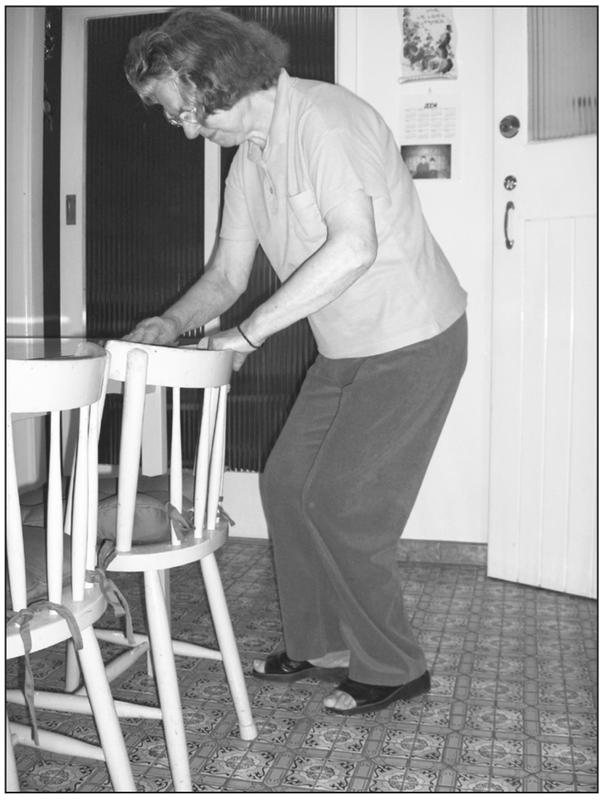
Partially bend the knees instead of bending the back. Slightly bend the knees to get to the table.
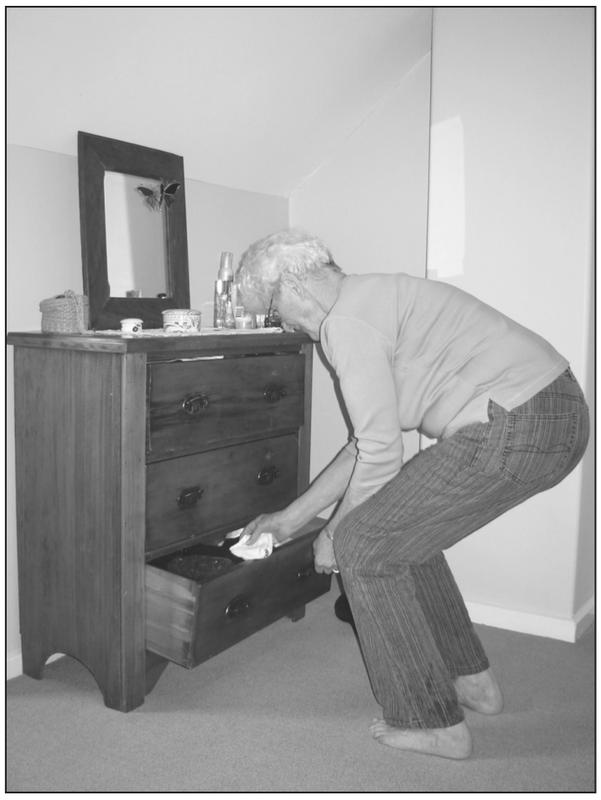
Bending knees to get socks out of the bottom drawer.61
Instructions
- Bend your knees instead of bending your back.
- You don’t have to do a full squat – partial squatting is good for building up strength.
Tip
Move everyday items so that you have to bend your knees to reach them.
Ideas of possible daily activities for the ‘bending your knees’ activity
Bend your knees when:
- picking up the TV remote off the coffee table
- getting things out of low cupboards in the kitchen
- putting things away in the kitchen cupboards
- getting your socks and underwear out of the drawer
- picking up a pen or hanky that you have accidentally dropped on the floor, use support as required
- opening or closing any drawer or cupboard that is below waist height.
As you get better at this activity you might move some regularly used items so that you have to bend your knees to get them. This could include:
- putting the dishwashing liquid in the cupboard below the sink
- putting the toothpaste in the vanity
- moving the washing powder to a lower shelf.
62
2. Sit to stand – normal chair
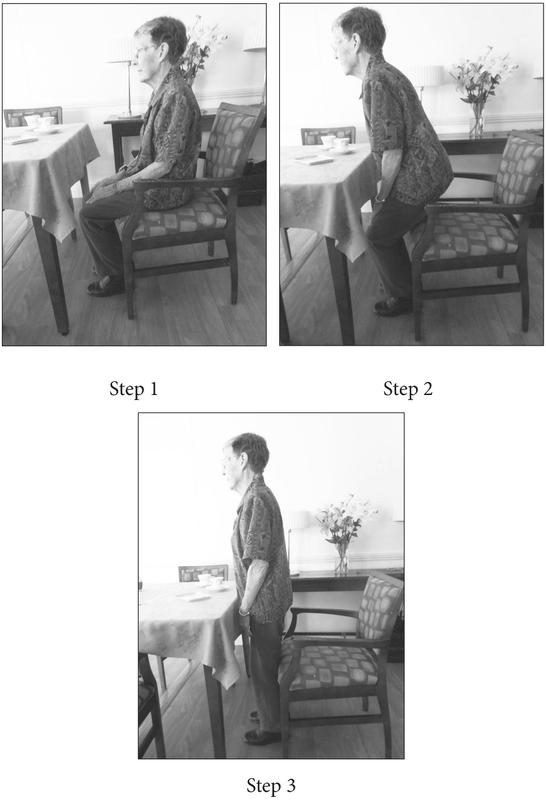
Standing up from a normal chair.63
Instructions
- Bottom should be at the front of the chair.
- Your feet should be underneath you.
- Don’t rock to stand up.
- Push up using your legs to do the work.
- Aim to stand slowly and with control.
Tips
- Stop to get your balance once you are standing.
- Try to decrease the support you use with your hands – your leg muscles will get stronger.
Sit to stand – low chair
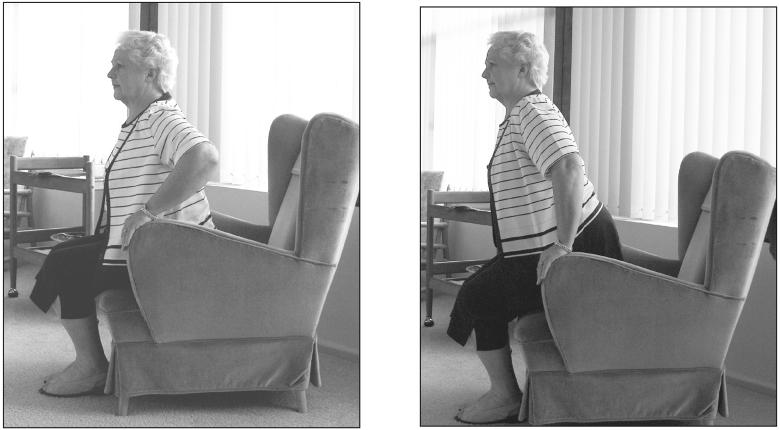
Use hands for support to start but gradually try to decrease the support you use from your hands.
Ideas of possible daily activities for the ‘sit to stand’ activity
Whenever you stand up, concentrate on standing up using your legs with as little support from your hands as is safe.
You can repeat the activity to build more strength.
Stand up and sit down:
- each time you sit down at the kitchen or dining room table stand up and sit down again
- each time the ads come on when you are watching your favourite TV program
- every time you finish a chapter in a book
- every time you finish reading a article in the newspaper
- if you have been sitting for a long time while knitting or sewing, reading or waiting.
65
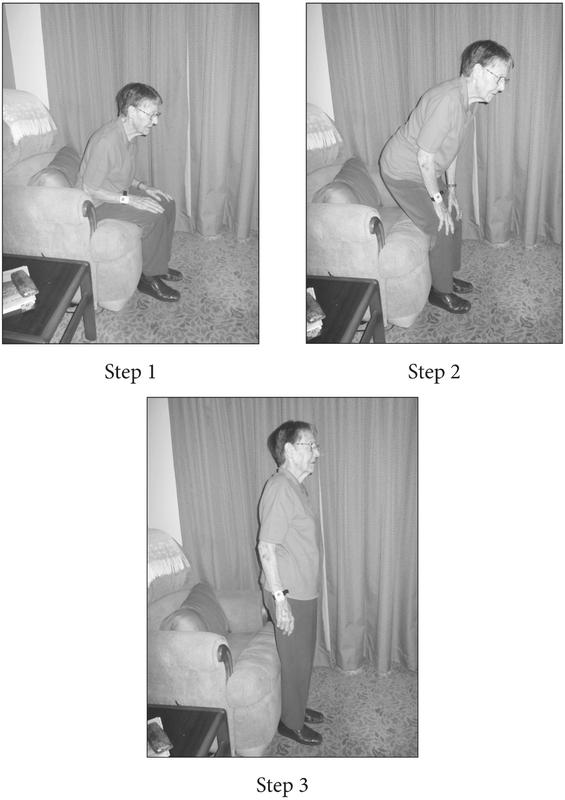
Standing up from a low chair without using hands for support.66
3. On your toes – standing
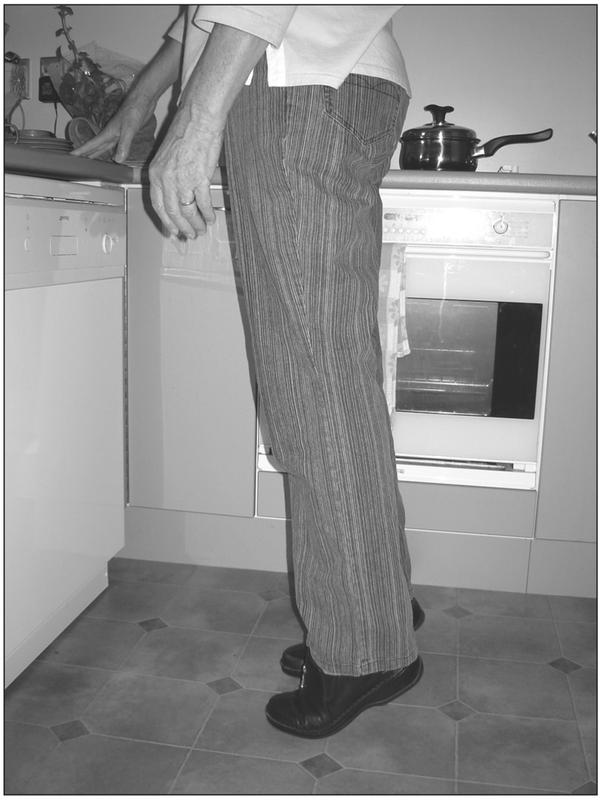
Standing on your toes using fingertips for support.
Instructions
- Start with hand support as needed.
- Gradually decrease the amount of support.
Tip
Whenever you reach above waist height go onto your toes even if you don’t need to do it to be able to reach what you need.67
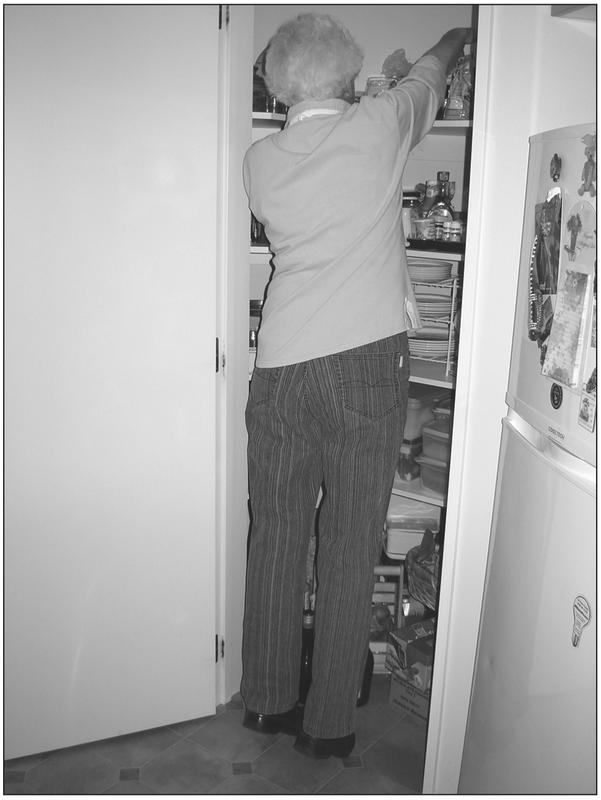
Standing on your toes when reaching above waist height.68
On your toes – walking
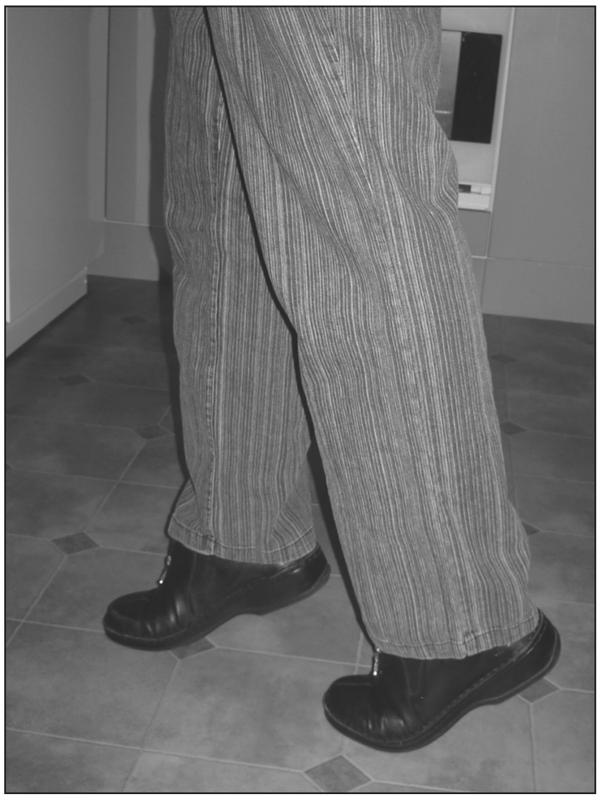
Walking on your toes.
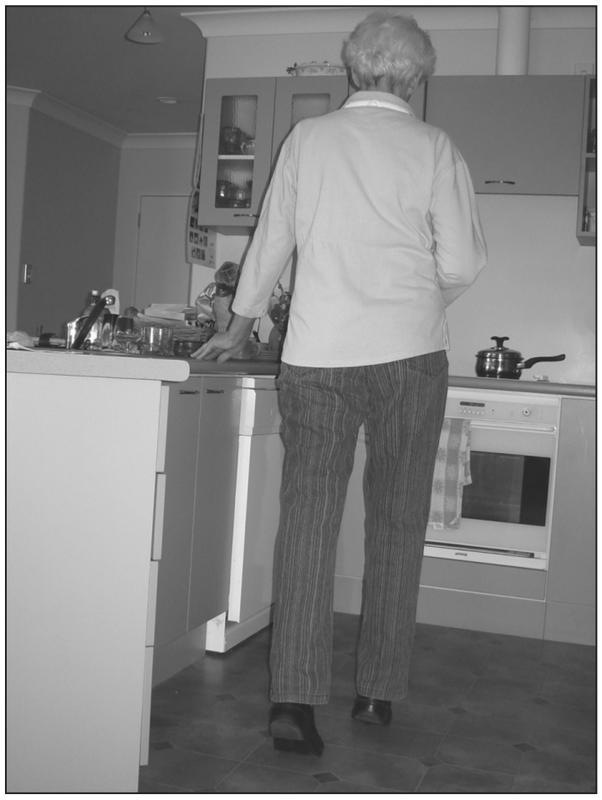
Walking on toes in the kitchen, using the bench for support.69
Instructions
- Walk on your toes.
- Keep your heels off the ground.
- Start with support.
Ideas of possible daily activities for the ‘standing and walking on your toes’ activity
Stand on your toes:
- each time you turn the light switch on and off
- to get your coat off the coat hook
- to get your shirt/blouse out of the wardrobe
- to reach up to get the laundry powder
- to get cups or glasses out of the kitchen cupboard.
Walk on your toes:
- next to the kitchen bench
- along the hallway to the front door
- next to the rail on the verandah
- around the kitchen or dining room table
- from the bedroom to the kitchen close to the wall
- from the lounge to the kitchen close to the wall.
70
4. On your heels – standing
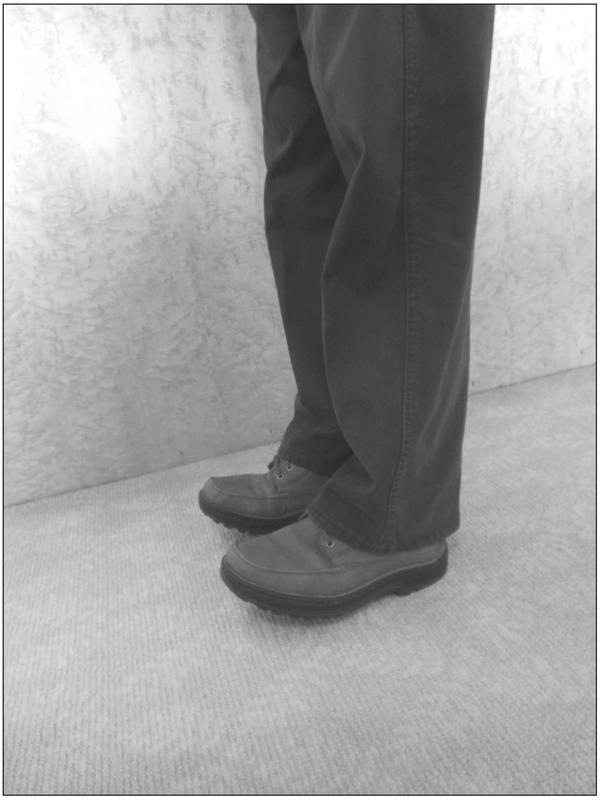
Standing on your heels.
Instructions
- Go onto your heels.
- Use hand support as needed.
- Gradually decrease the amount of support.
71
Tips
- This is a difficult activity to do without support. You will still strengthen your muscles if you use support.
- This is also a balance activity.
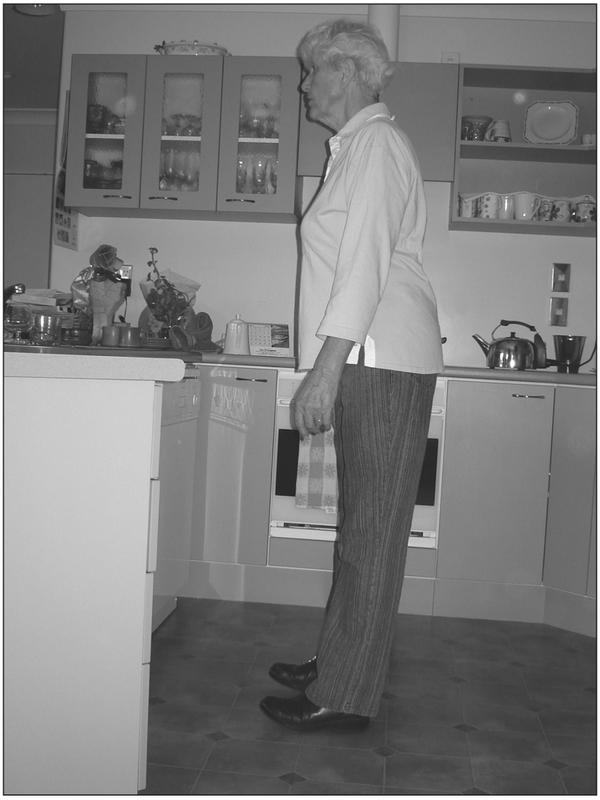
Standing on heels while waiting for the kettle to boil.72
On you heels – walking
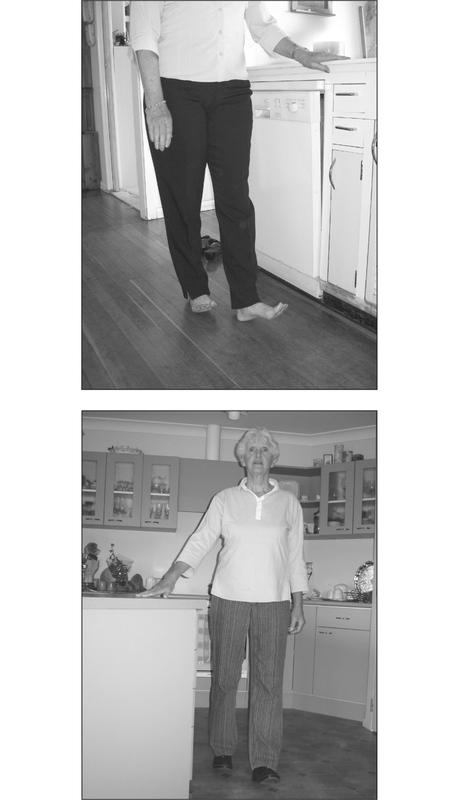
Walking on heels using the kitchen bench for support.73
Instructions
- Walk on your heels.
- Keep your toes off the floor.
- Use support as needed.
Tips
- This is a difficult activity to do without support. You will still strengthen your muscles if you use support.
- This is also a balance activity.
Ideas of possible daily activities for standing and walking on your heels
Stand on your heels:
- each time you turn the light switch on and off
- while waiting for the kettle to boil
- while waiting for the toaster to pop
- while waiting in a queue, though making sure you have support readily available
- when the ads come on while watching TV.
Walk on your heels:
- next to the kitchen bench
- along the hallway to the front door
- next to the rail on the verandah
- around the kitchen or dining room table
- close to the wall, from the bedroom to the kitchen
- close to the wall, from the lounge to the kitchen.
74
5. Up the stairs
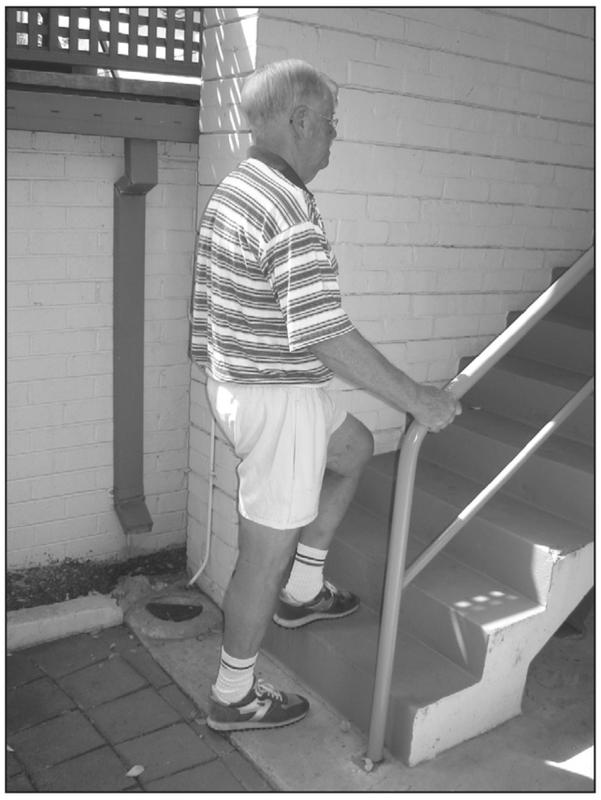
Walking up the stairs using firm support – holding on tightly to the rail.

Walking up the stairs using light support – using less hand support on the hand rail.
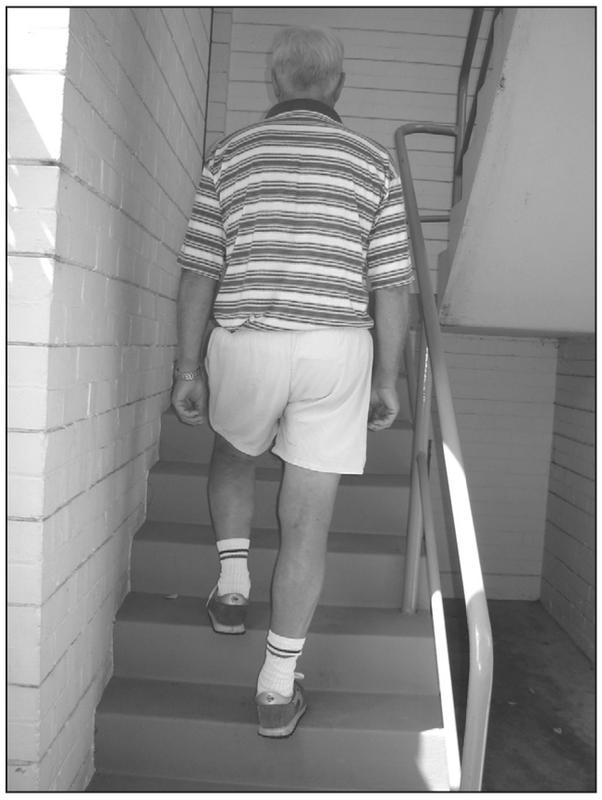
Walking up the stairs using no hand support.75
Instructions
- Use your legs to lift you up the stairs rather than pulling up with your hands.
- Decrease the amount of support that you use.
Tip
Look for stairs instead of avoiding them.
Ideas of possible daily activities for doing the ‘up the stairs’ activity
Walk up the stairs more often.
- If you have stairs at home, use them more frequently during the day or week.
- Make more trips up stairs you have at home.
- Whenever you are out shopping, visiting friends and family or going to appointments take the stairs instead of the lift.
- Change where you walk to include walking up a flight of stairs when you are doing your shopping, going to the movies, attending meetings or visiting friends and family.
76
6. Walk sideways
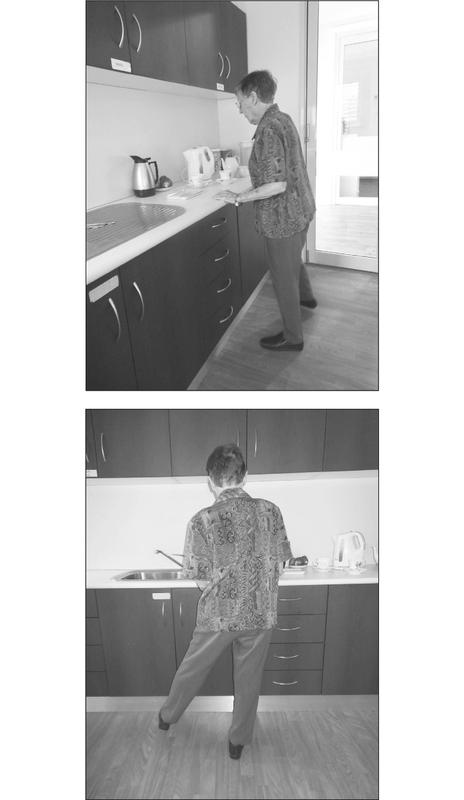
Sideways stepping using the kitchen bench for support.77
Instructions
- Swing leg to the side and step.
- Bring the other leg to meet it.
- Keep hips facing forwards.
- Use support if needed.
- Change direction and use the opposite leg.
Ideas of possible daily activities for the ‘stepping sideways’ activity.
Step sideways:
- next to the kitchen bench
- along the hallway to the front door
- along the verandah next to the rail
- between the lounge and bedroom close to the wall
- around the bed
- around the kitchen or dining room table
- along the pathway at the side of the house close to the fence.
78
7. Tighten muscles – move ankles
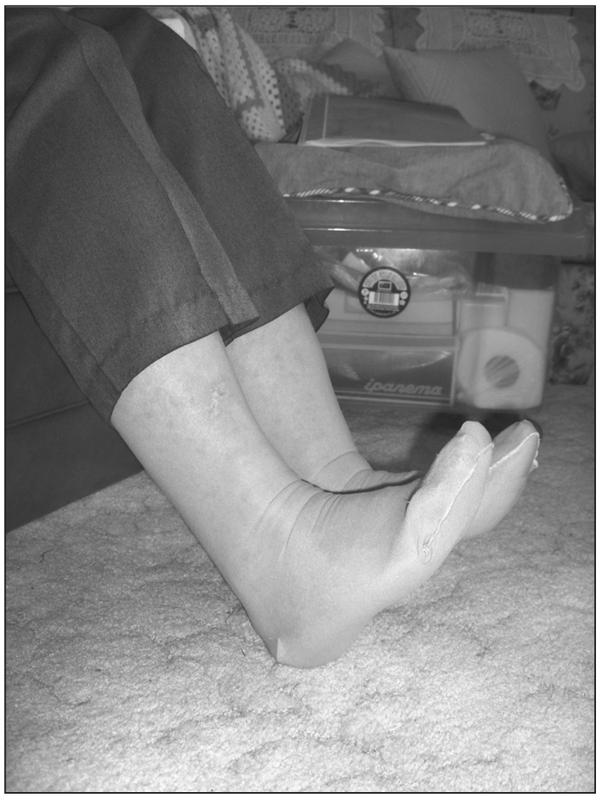
Up on your heels while sitting.
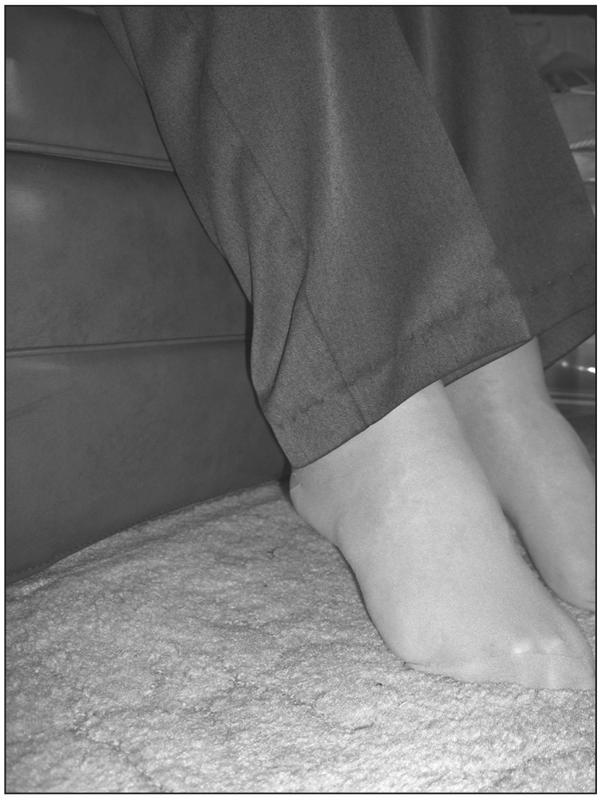
Up on your toes while sitting.79
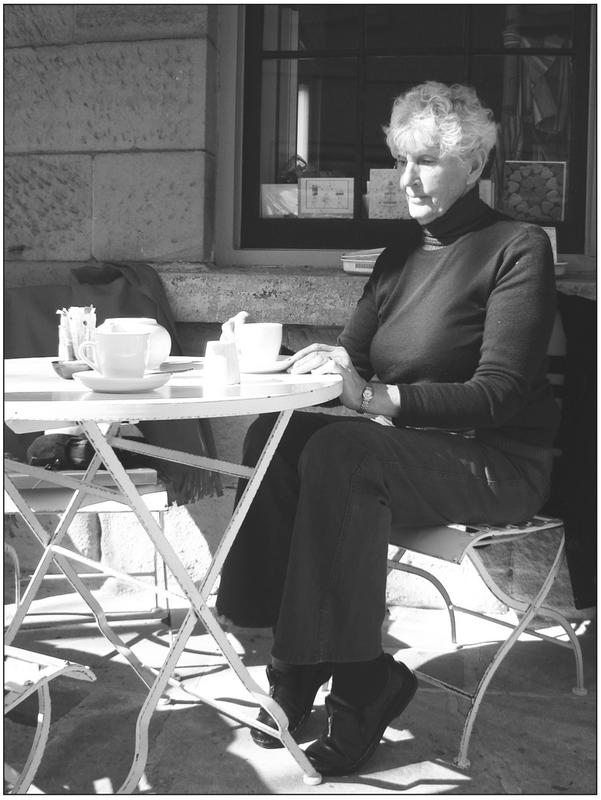
Up on your toes while having morning tea.80
Tighten muscles – bend and straighten knees
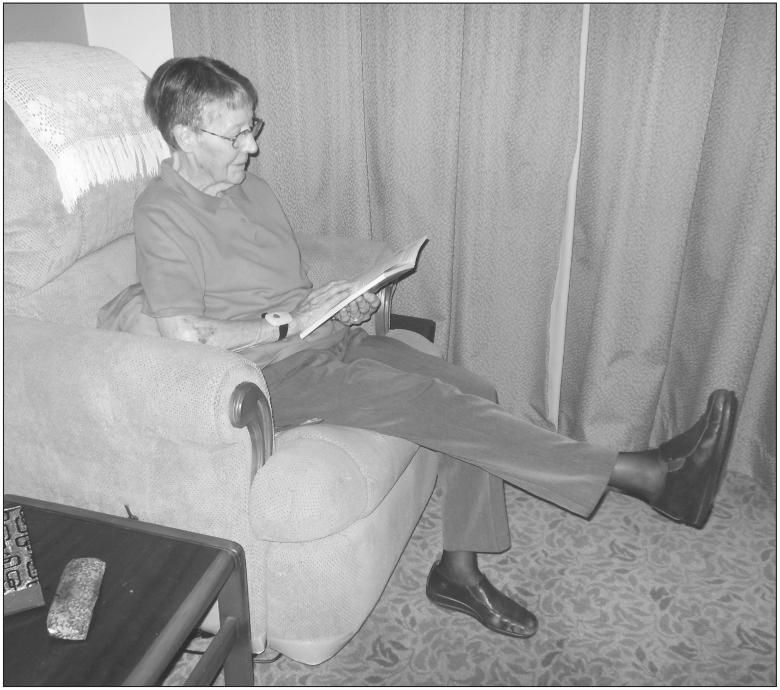
Straightening the knee while reading.81
Tighten muscles – tighten buttocks
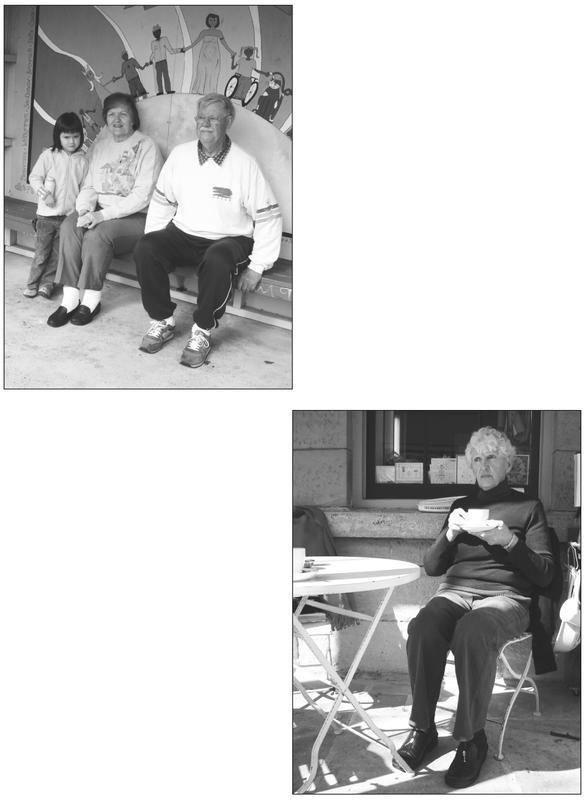
Tightening buttocks while sitting – nobody will know that you are exercising.82
Ideas of possible daily activities for doing the ‘tightening muscles’ activity
Move ankles:
- whenever you are sitting down reading the newspaper or watching TV
- having your morning or afternoon tea
- waiting for an appointment
- waiting for the bus or train to arrive
- when you wake up in the morning and are still lying in bed
- lying in bed at night if you are unable to sleep
- sitting on the edge of the bed before you stand up in the morning
- while you are sitting on the train or bus.
Bend and straighten knees:
- while you are sitting watching TV
- while you are sitting reading the newspaper or doing the crossword
- when you are at the computer
- when you are sitting at the table
- before or after you have eaten breakfast, lunch or dinner
- while you are waiting at the bus stop or train station.
Tighten buttocks:
- Whenever you are sitting down or standing up. Nobody will know that you are exercising.